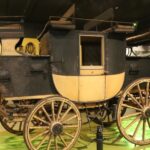Today, battling Corona Virus, the government asks Arlingtonians to shutter businesses, cultural facilities, and schools and requests residents stay at home in order to stop the spread of this highly contagious pathogen.
Epidemics swept through America, and Arlington in the past. In 1918, Arlingtonians confronted the deadly Spanish Influenza pandemic. How they responded to this public health emergency shaped how they would react to future crises. Let’s take a look back and see how they coped with its devastating impact.
In the 19th and early 20th centuries, before public health was regularly practiced, outbreaks of typhoid, smallpox diphtheria, scarlet fever, and cholera were common in Arlington (called Alexandria County until 1920). Lack of rudimentary sanitation caused most of the surges in disease.

1929 quarantine sign posted by the Arlington County Department of Health (AHS collection)

The Evening Star on August 25, 1914
In 1918, the Spanish Flu epidemic, the worst pandemic in American history erupted. The Spanish Flu probably originated in Kansas. It quickly spread throughout the world as US troops made their way to Europe to fight in World War I. About 500 million people around the globe became infected. The number of deaths reached roughly 40- 50 million with about 675,000 occurring in the United States.
The flu first appeared in the winter of 1918, but the second wave of the pandemic, beginning in the fall of 1918, was much deadlier. The first wave attacked the sick and elderly, while younger, healthier people recovered easily. By the second wave, the virus had mutated into a more virulent form, taking young and old alike. In Arlington and beyond, October 1918 was the most destructive month of the whole pandemic.

The Washington Post reprinted on April 2, 2020
Beginning in late September of 1918, the Alexandria Gazette, Washington Post, and Evening Star repeatedly warned the public about the spread of the influenza epidemic. Fear gripped the area.

Hospital beds on porch for fresh air. c. 1918. (Courtesy Library of Congress)
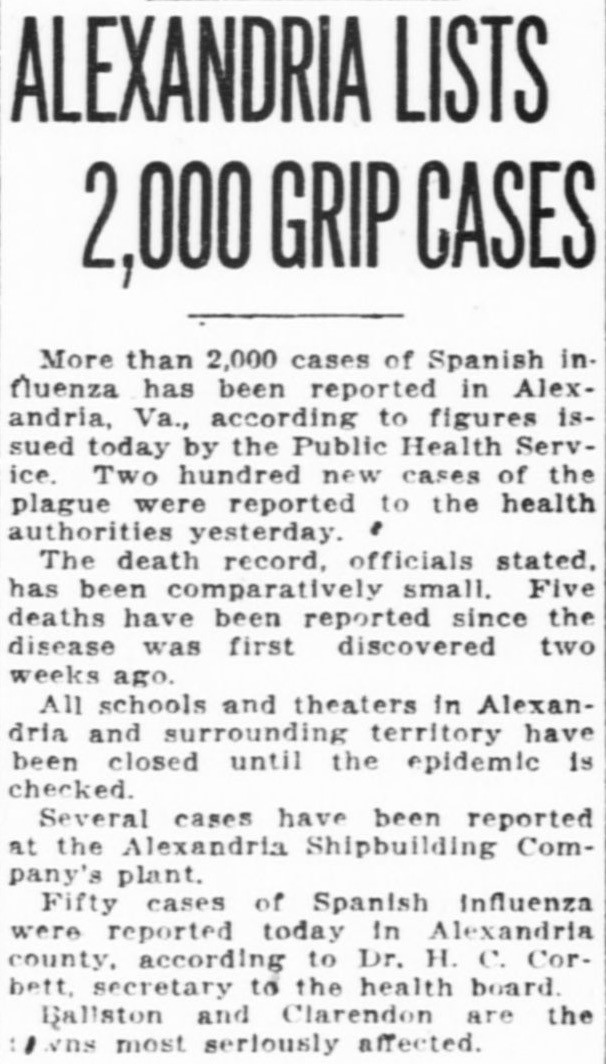
The Washington Times on October 2, 1918
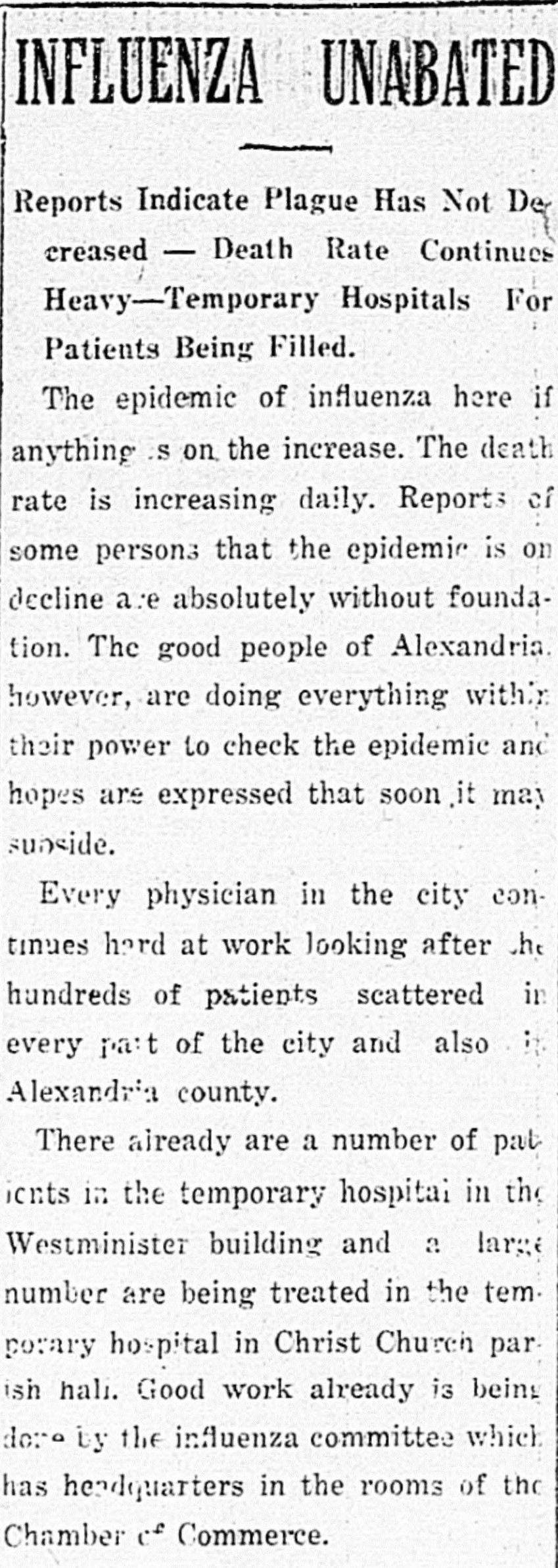
The Alexandria Gazette on October 14, 1918
The US Public Health Service, Virginia State Board of Health and the Executive Committee of the Virginia Council of Defense, acted to limit the transmission of the virus by posting notices in newspapers and public spaces. By appealing to the patriotism of Virginians, state officials convinced residents to remain at home and avoid gatherings.
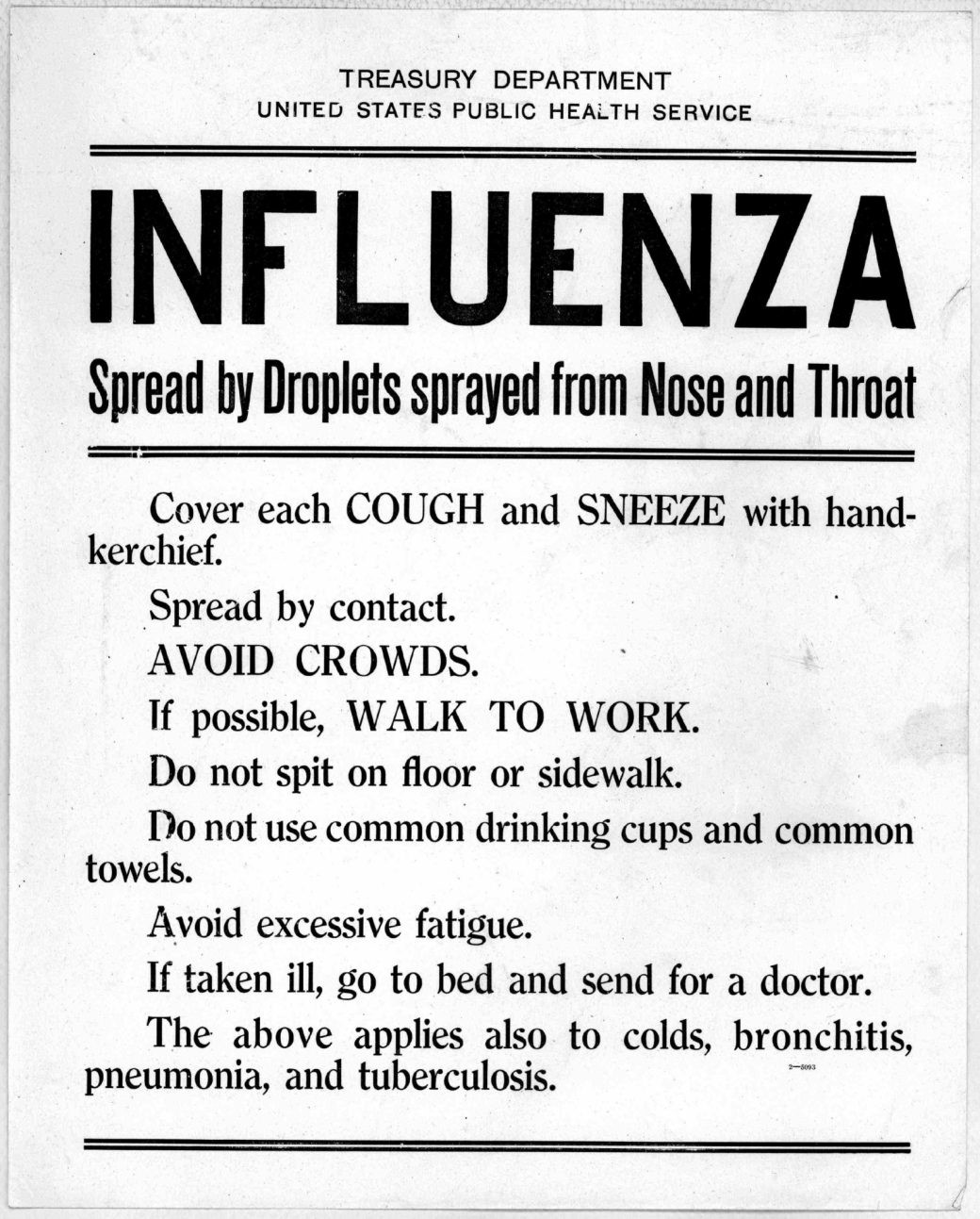
US Department of Health, 1918

The Alexandria Gazette on October 7, 1918
The Spanish Influenza caused high fever, sore throat, a cough and sometimes a serious nosebleed. It was highly contagious.
Preventing the spread of the Influenza saved lives. Health experts advised citizens to avoid crowds and common drinking cups, and to cover one’s mouth when coughing. Less conventional suggestions included, “Don’t put into your mouth fingers, pencils or other things that don’t belong there” and not “to expectorate promiscuously.” In the Washington Post, authorities warned readers “against gorging at dinner time” and ”above all things,” to “try to stay cheerful.”

The Alexandria Gazette on October 7, 1918

The Alexandria Gazette on October 18, 1918
In Arlington and beyond, schools, theaters, churches, and many stores closed to help contain the virus. Unable to find healthy jurors, the court system was also essentially shut down.
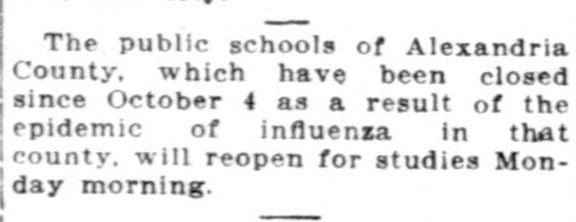
The Washington Herald on November 2, 1918

The Alexandria Gazette on October 28, 1918
The Influenza epidemic ravaged Arlington and Alexandria City, as well as large pockets of Virginia. Health officials scrambled to find additional nurses and doctors and to create temporary hospitals for the overflow of patients. In Richmond, authorities cut corners by allowing medical students to work as physicians. In the end, 54 Arlingtonians died from the Spanish Flu and uncounted were sickened.

Dr. Henry C. Corbett, the Secretary of the Board of Health for Arlington and the “pioneer” of health services in Arlington, oversaw the crisis in the county. He visited hundreds of patients a day, dispensing a concocted treatment of atropine capsules (belladonna) and whiskey.
Dr. Henry C. Corbett, undated (AHS collection)

The Alexandria Gazette on October 12, 1918
Soldiers stationed at Fort Myer, the US Army post by Arlington National Cemetery, were especially vulnerable to the Spanish Flu. Infections spread quickly amongst those in close quarters. Recruits ate in communal mess halls and lived in tightly packed barracks.

Fort Myer Mess Hall, c. 1918 (courtesy Library of Congress)
Fighting the Spanish Flu changed Arlingtonians’ perception of the importance of public health. It probably influenced the decision, in 1919, to establish Arlington’s first Department of Health and to hire Dr. JW Cox to lead it. The agency sought to improve sanitation throughout the county in hopes of preventing, not just reacting to, the spread of disease.
Beginnining in 1921, Arlington opened clinics in each of its three Magisterial Districts: Arlington, Jefferson, and Washington. There was no municipal water service or sewage system in any of the Districts.

Clarendon Clinic opened around 1923. This is the facility in 1932. (AHS collection)
Throughout the 1920s and 1930s, outbreaks of communicable disease continued to threaten the health of Arlingtonians. With competent health officials in place, epidemics were short lived and widespread fear was kept at bay.
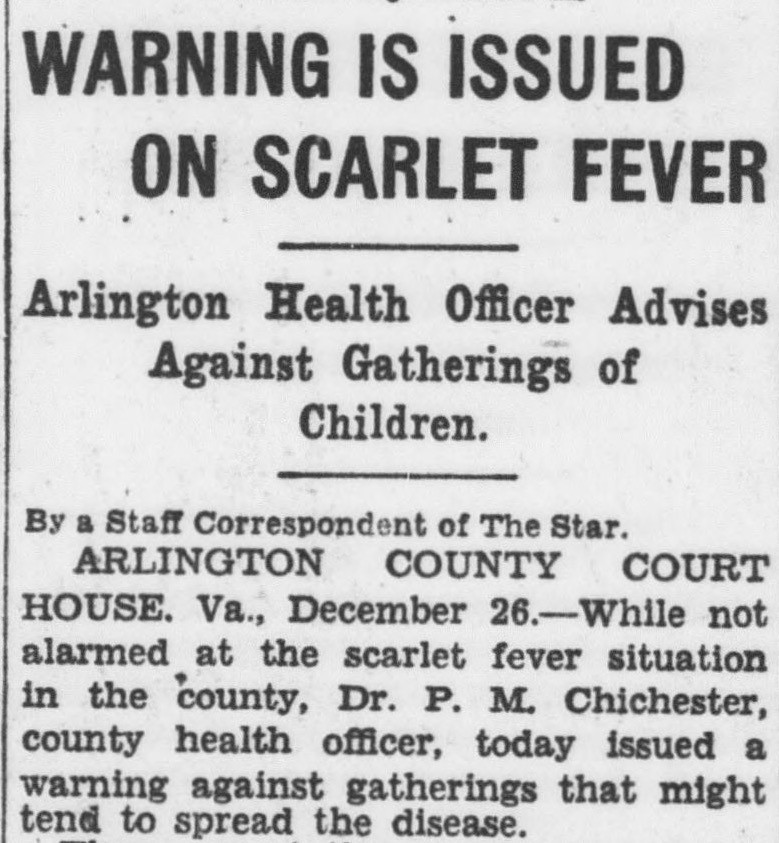
The Evening Star on December 26, 1929

The Evening Star on July 1, 1930
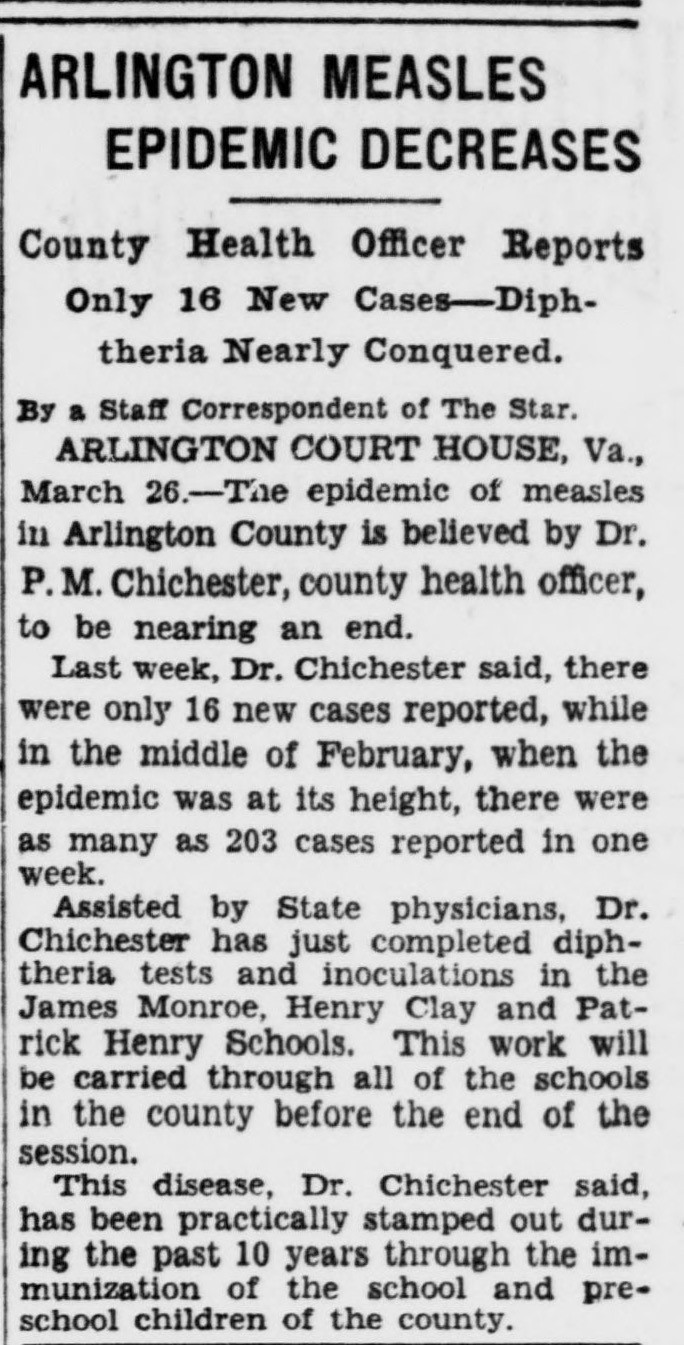
The Evening Star on March 26, 1934
In 1924, Arlington’s Department of Health appointed Dr. Peyton M. Chichester, as its second director. He brought important health improvements to the county including the building of water and sewer systems and instituting of child health programs. Chichester also managed immunization, anti-fly, and public education campaigns to help eradicate communicable diseases. Dr. Chichester became a beloved figure in Arlington.
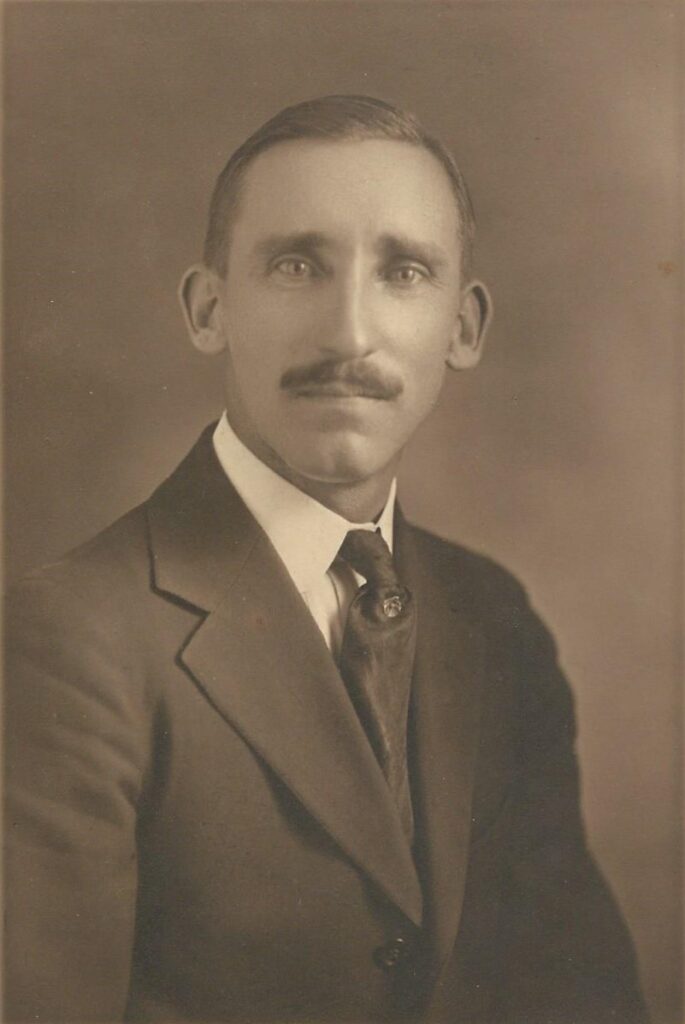
Dr. Peyton M. Chichester (Courtesy findagrave.com)
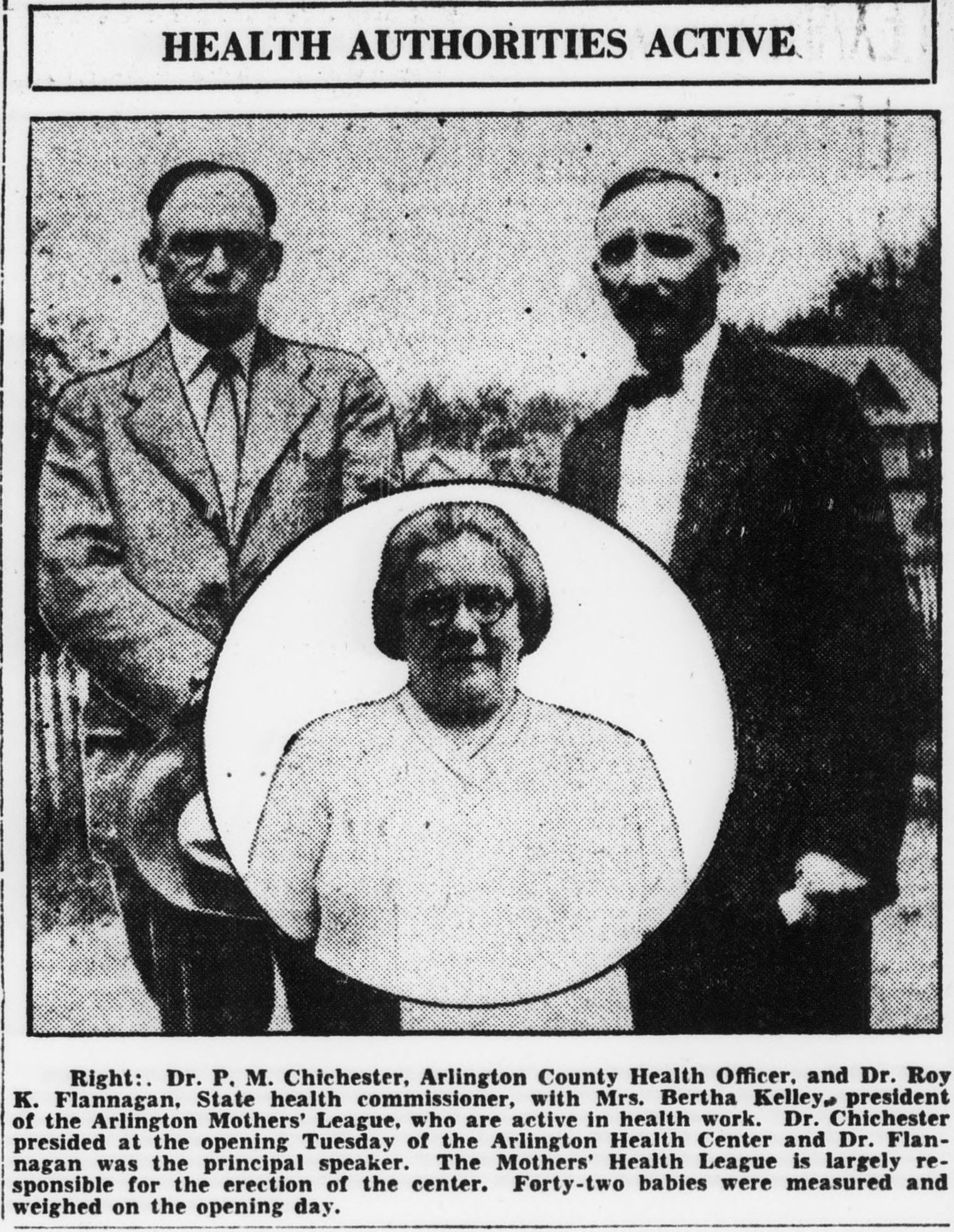
The Evening Star on August 29, 1929

The Evening Star on April 22, 1929
As Corona Virus spreads throughout Arlington, the country, and world, health officials are sounding similar alarms and providing similar advice as heard in the past. We can get through this if we heed their warnings – and try to “remain cheerful.”
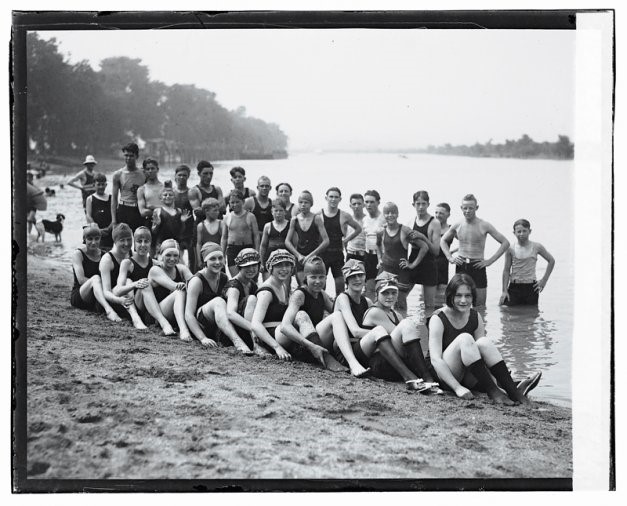
Normal life returns to Arlington as healthy bathers enjoy Arlington Beach, 1922 (courtesy Library of Congress)
[Jessica Kaplan researched and wrote this online exhibit.]

